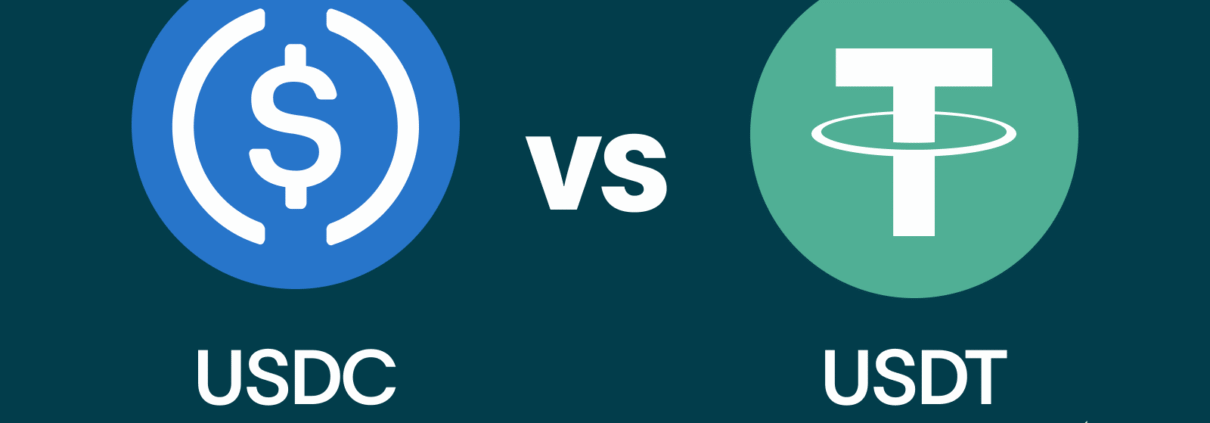Investing in Stablecoins: USDC vs USDT Guide
In the rapidly evolving world of cryptocurrencies, stablecoins have emerged as essential tools, combining the stability of fiat currencies with the advantages of digital assets. Among the most popular stablecoins are USD Coin (USDC) and Tether (USDT). Both are pegged to the US dollar, but they differ in transparency, regulatory compliance, and market adoption. This article provides a detailed comparison of USDC VS USDT, their benefits, and guidance on which may suit your needs best.
What Are Stablecoins?
Stablecoins are digital currencies designed to maintain a stable value by pegging them to a reserve asset, typically a fiat currency like the U.S. dollar. This stability makes them ideal for trading, remittances, and storing value. USDC and USDT are the two most widely used stablecoins today.
USDC vs USDT: Key Differences
1. Issuer and Regulatory Compliance
- USDC: Issued by Circle, a U.S.-based company, USDC is known for transparency and regulatory compliance. Circle provides regular attestations of its reserves, ensuring every USDC is fully backed by U.S. dollars. This makes it a preferred choice for institutions and businesses that prioritize compliance.
- USDT: Issued by Tether Limited, USDT has faced scrutiny regarding its reserve practices. While Tether claims that each USDT is backed 1:1 by dollars or equivalent assets, its transparency and auditing practices have been questioned in the past.
2. Market Capitalization and Liquidity
- USDT: USDT remains the dominant stablecoin with a market capitalization exceeding $169 billion. Its widespread adoption across exchanges ensures high liquidity, making it ideal for traders and short-term investors.
- USDC: USDC has a market capitalization of over $58 billion and is growing rapidly. Its focus on transparency attracts institutional investors and regulated businesses, making it increasingly popular in the U.S. market.
3. Transparency and Auditing
- USDC: Circle provides monthly reserve attestations through independent auditors, giving users confidence that every USDC is fully backed and compliant with regulations.
- USDT: While Tether occasionally releases attestations, it has faced criticism for inconsistent auditing practices, raising concerns about the true backing of USDT.
4. Adoption and Use Cases
- USDC: USDC’s regulatory compliance makes it suitable for businesses, lending platforms, decentralized finance (DeFi) projects, and cross-border payments where transparency is crucial.
- USDT: USDT’s wide adoption and liquidity make it the top choice for traders and investors seeking fast, efficient transactions on various exchanges worldwide.
Benefits of USDC and USDT in the Future
USDC
- Regulatory Alignment: With increasing global regulation of digital assets, USDC’s compliance positions it for integration into traditional financial systems.
- Institutional Adoption: Transparency attracts institutional investors, leading to more adoption in financial products and services.
- Integration with Traditional Finance: USDC could see wider use in payroll, remittances, and everyday financial transactions.
USDT
- Market Liquidity: High liquidity ensures efficient trading and instant transactions.
- Global Reach: Widespread adoption allows seamless cross-border transactions.
- Potential for Innovation: Tether’s extensive infrastructure may support new financial products in the digital asset space.
Conclusion
Both USDC VS USDT are vital players in the cryptocurrency ecosystem, but they serve different purposes. USDC’s transparency and regulatory compliance make it ideal for institutions and businesses in regulated environments. On the other hand, USDT’s dominance and high liquidity make it the preferred choice for traders seeking fast and efficient transactions. Understanding the unique strengths of each stablecoin can help investors and businesses make informed decisions.




Leave a Reply
Want to join the discussion?Feel free to contribute!